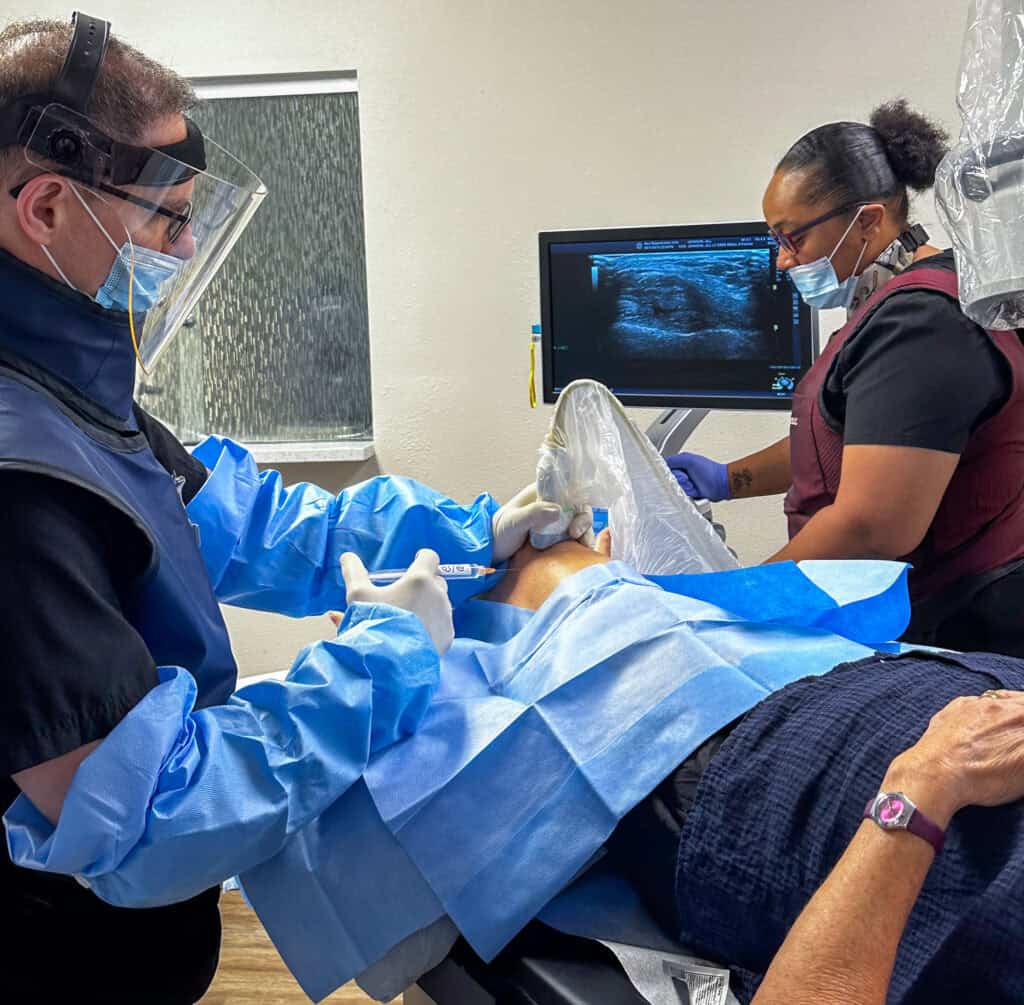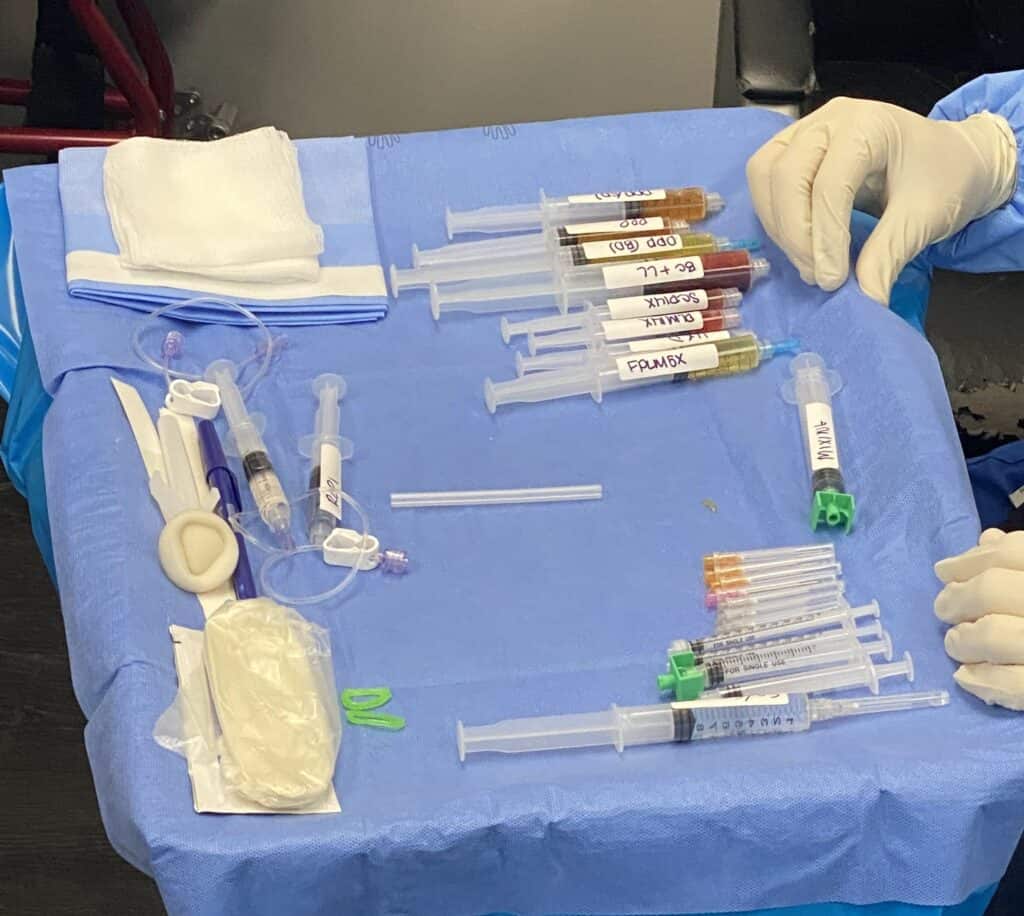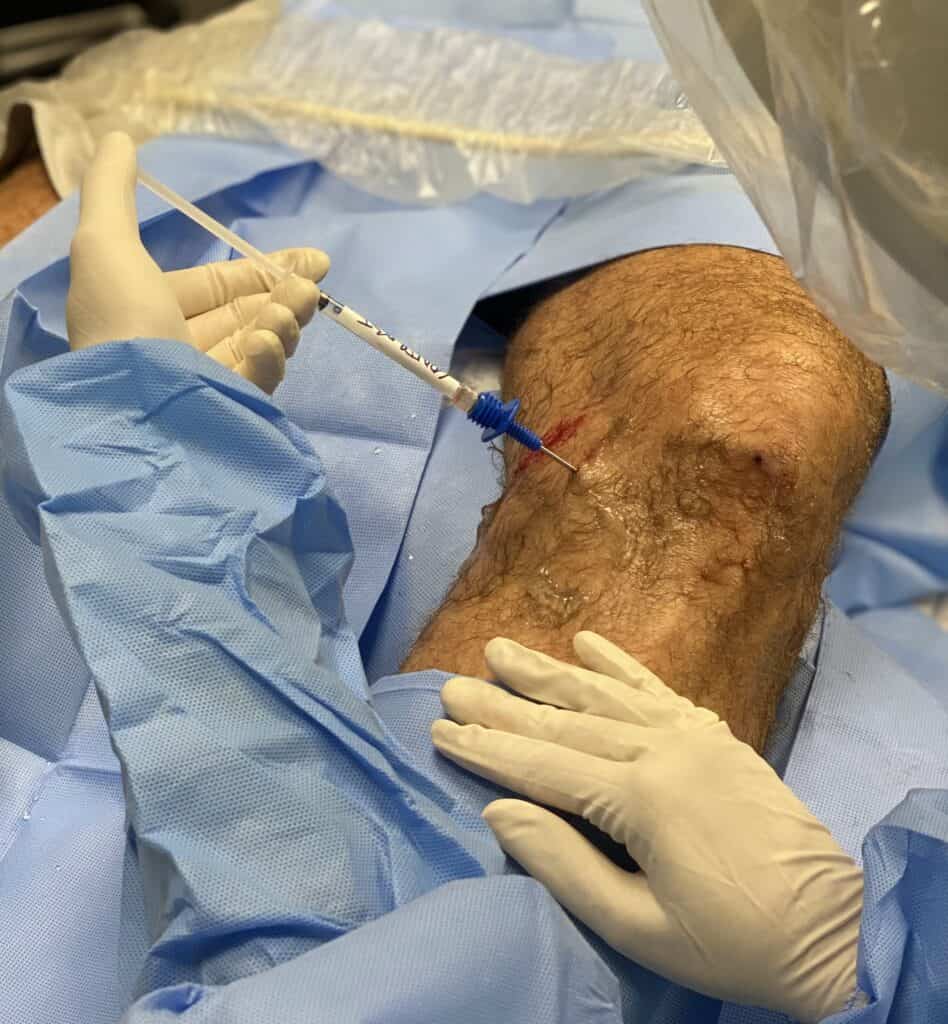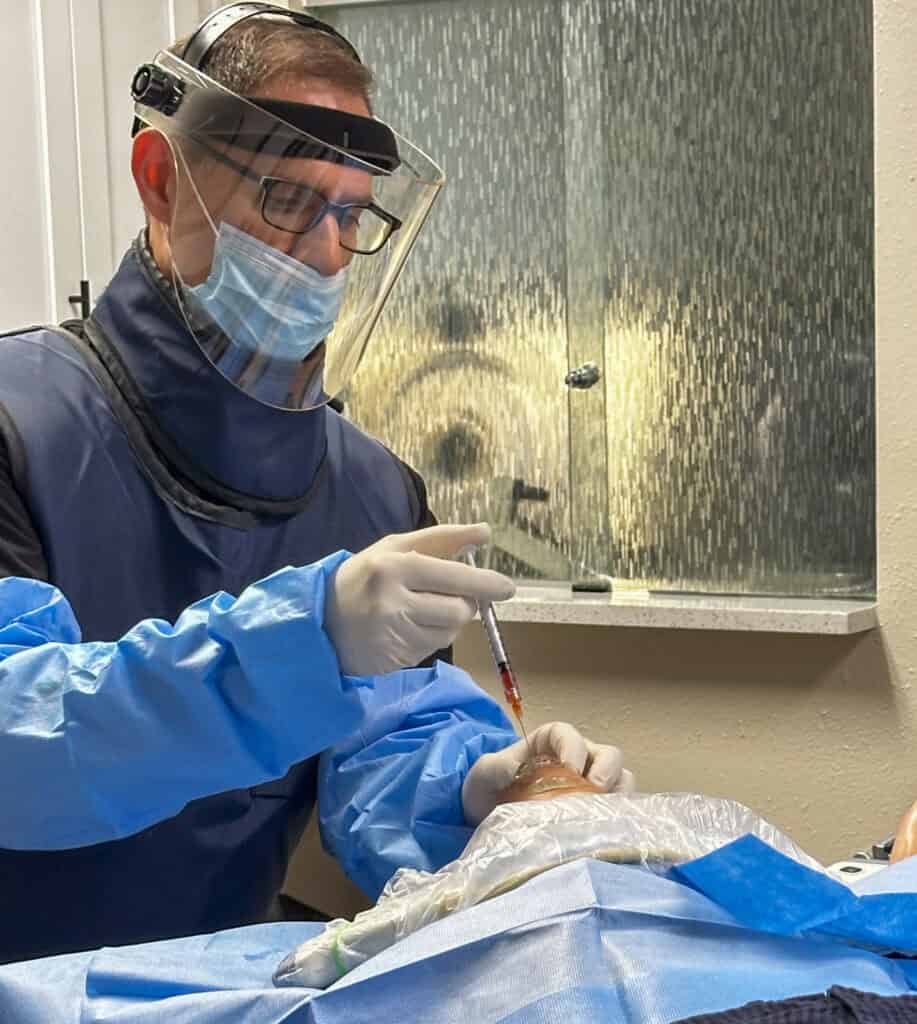Platelet-rich plasma (PRP) therapy has emerged as a promising treatment option for knee
osteoarthritis (OA), offering patients a non-surgical approach to pain relief and improved joint
function. However, the effectiveness of PRP in treating knee OA can vary, with some patients
experiencing significant benefits while others may see less favorable outcomes. In this blog, we
delve into the reasons behind both the successes and failures of PRP therapy for knee OA.
The rationale behind using PRP for knee OA lies in its regenerative properties. Platelets contain
a myriad of growth factors and cytokines that promote tissue repair and regeneration. When
injected into the knee joint affected by OA, PRP stimulates the body’s natural healing
mechanisms, potentially preventing further cartilage degeneration and reducing inflammation
and pain.
So, why does PRP therapy succeed in some cases and fail in others?

Injecting Without Ultrasound Guidance
PRP therapy may fail to yield desired outcomes if clinics do not employ ultrasound guidance
during the injection process. Without the aid of ultrasonography, there is a risk of inaccurately
targeting the affected area, leading to suboptimal placement of the injectate. This can result in
uneven distribution of PRP and inadequate coverage of the injured or degenerated tissue,
diminishing the therapeutic effects of the treatment. At Regenexx at New Regeneration
Orthopedics of Florida, we prioritize the use of ultrasonography to precisely inject the affected
area we are treating. By utilizing ultrasonography, we ensure accurate placement of the
injectate, thereby optimizing the efficacy of PRP therapy and eliminating guesswork in the
treatment process.
Insufficient Dosing
The efficacy of PRP therapy lies in the precise dosage and concentration of platelets
administered to the patient. This crucial aspect determines the therapeutic efficacy and
outcomes of PRP treatments. The concentration of platelets directly influences the quantity of
growth factors and cytokines present in the PRP injectate, which are both instrumental in
promoting tissue repair and regeneration. Therefore, meticulous attention to detail in
determining the appropriate platelet dosage is paramount to achieving optimal results.
We at Regenexx have seen repeatedly that the concentration of platelets in PRP plays a crucial
role in its therapeutic efficacy (1) A recent study published in the Orthopaedic Journal of Sports
Medicine highlights the importance of PRP concentration in determining treatment outcomes
for knee OA (2). The researchers found that higher concentrations of platelets in PRP were
associated with greater improvements in pain relief and functional outcomes compared to
lower concentrations.

Lack of Physical Therapy
It has been well-studied, that PRP can yield favorable outcomes when utilized alongside
physical therapy; however, there is a prevalent misconception among some clinics that PRP
injections serve as a substitute for physical therapy, leading to misguided comparisons between
the two modalities. Contrary to this notion, PRP should be regarded as a complementary
therapy that augments the benefits of a comprehensive rehabilitation program.
Existing literature underscores the importance of integrating PRP injections into a structured
rehabilitation regimen, rather than viewing them as mutually exclusive treatment options. At
Regenexx at New Regeneration Orthopedics of Florida, we advocate for a holistic approach to
patient care, which prioritizes starting patients on a physical therapy regimen at a location of
their choosing, post-procedure, and even sometimes, before their scheduled procedure.
This lays the foundation for optimal treatment outcomes by preparing the body for the
regenerative effects of PRP. Furthermore, sustaining physical therapy post-procedure is
essential for reinforcing the gains achieved through PRP therapy and facilitating long-term
recovery.
By adopting this approach, patients can maximize the benefits of PRP therapy and expedite
their return to pre-injury levels of activity. By combining PRP therapy with physical therapy,
patients can optimize their outcomes and achieve sustained improvements in musculoskeletal
health and function.
Continuation of Certain Medications
One of the contributing factors to the potential failure of Platelet-Rich Plasma (PRP) treatments
in certain cases lies in the oversight of patient history by some practices administering PRP
therapy. Specifically, inadequate consideration is often given to whether the patient has recently undergone a corticosteroid injection or is currently using nonsteroidal anti-
inflammatory drugs (NSAIDs), both of which are recognized for their detrimental effects on stem cells and growth factors. In instances where patients are utilizing these medications, it is
advisable to wait until they can discontinue their usage before proceeding with PRP injections.
The reason behind this precaution is rooted in the known toxicity of corticosteroids,
anesthetics, and NSAIDs to orthobiologics. By waiting until the patient is no longer reliant on
these substances, it is possible to mitigate the risk of interference with PRP’s efficacy in
initiating the body’s natural healing process. Furthermore, the presence of these medications
may impede the recruitment of stem cells to the targeted area, thereby hindering the
therapeutic effects of PRP treatment. Therefore, it is essential for healthcare providers to
thoroughly assess patients’ medication histories and consider discontinuation of potentially
interfering medications prior to administering PRP therapy for optimal outcomes.



In conclusion, PRP therapy holds promise as a safe and effective treatment option for knee OA,
offering patients the potential for pain relief and improved joint function. By understanding the
importance of PRP concentration and addressing the factors that contribute to treatment
success or failure, healthcare providers can better tailor PRP therapy to meet the needs of
patients with knee OA.
To learn more about PRP therapy for knee OA and explore personalized treatment options,
schedule a consultation with our experienced regenerative medicine specialists today. We have
clinics in St. Petersburg, Sarasota, Tampa, and Orlando.
If you seek to eliminate uncertainty regarding the effectiveness of your PRP procedure in
achieving optimal outcomes, visit one of our clinics today.
References:
- https://newregenortho.com/why-your-low-dose-prp-procedure-didnt-work
- (2) Patel S, Gahlaut S, Thami T, Chouhan DK, Jain A, Dhillon MS. Comparison of Conventional Dose Versus Superdose Platelet-Rich Plasma for Knee Osteoarthritis: A Prospective, Triple-Blind, Randomized Clinical Trial. Orthop J Sports Med. 2024 Feb 26;12(2):23259671241227863. doi: 10.1177/23259671241227863. PMID: 38410168; PMCID: PMC10896053.
About the author: Joseph Hoppes is a fourth-year medical student at LECOM in Bradenton who will begin his family medicine residency at Bayfront in St. Petersburg, Florida. Post-residency, he has aspirations to pursue a sports medicine fellowship with a focus on non-operative orthopedics and regenerative medicine.










